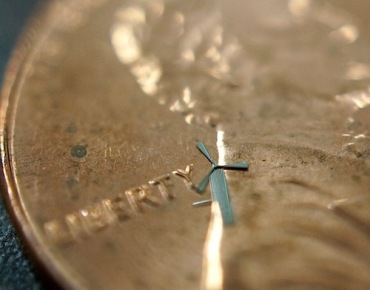Engineers Develop Microwindmills to Power Electronics

Engineers at the University of Texas at Arlington have developed a new technology that could come in handy when electronic devices run out of power. Their idea stems from a source of power generation that we are all familiar with; windmills.
However, these new devices, microwindmills, do not tower over large plots of land. Instead, they measure only 1.8 millimeters wide. According to J.C. Chiao, co-creator and electrical engineering professor at the University of Texas at Arlington, the microwindmills are so tiny that 2,040 of them could fit on an iPhone 4.
Smitha Rao, university research associate and designer of the microwindmill, hopes that smartphones and other electronic devices will one day be able to utilize the devices. If you’re out on business and your smartphone runs out of power, you could be in a tough spot. Rao and Chiao believe that their device could help to alleviate that situation and others altogether.
“Imagine that they can be cheaply made on the surfaces of portable electronics,” Chiao says. “So you can place them on a sleeve for your smartphone. When the phone is out of battery power, all you need to do is to put on the sleeve, wave the phone in the air for a few minutes and you can use the phone again.”
To create the 3D microelectromechanical systems (MEMs) that make up the microwindmills, Rao took ideas that are used in Japanese origami. However, instead of using paper, she created the MEMs out of flat nickel alloy pieces.
“The problem most MEMS designers have is that materials are too brittle,” Rao said. “With the nickel alloy, we don’t have that same issue. They’re very, very durable.”
Last September, tests were conducted on the alloy pieces and they were able to withstand the winds.
While these types of tests and others have been conducted on the microwindmills, no one has commented on whether or not they are able to generate electricity. The engineers hope that they will not only be able to power electronics some day, but buildings too.











